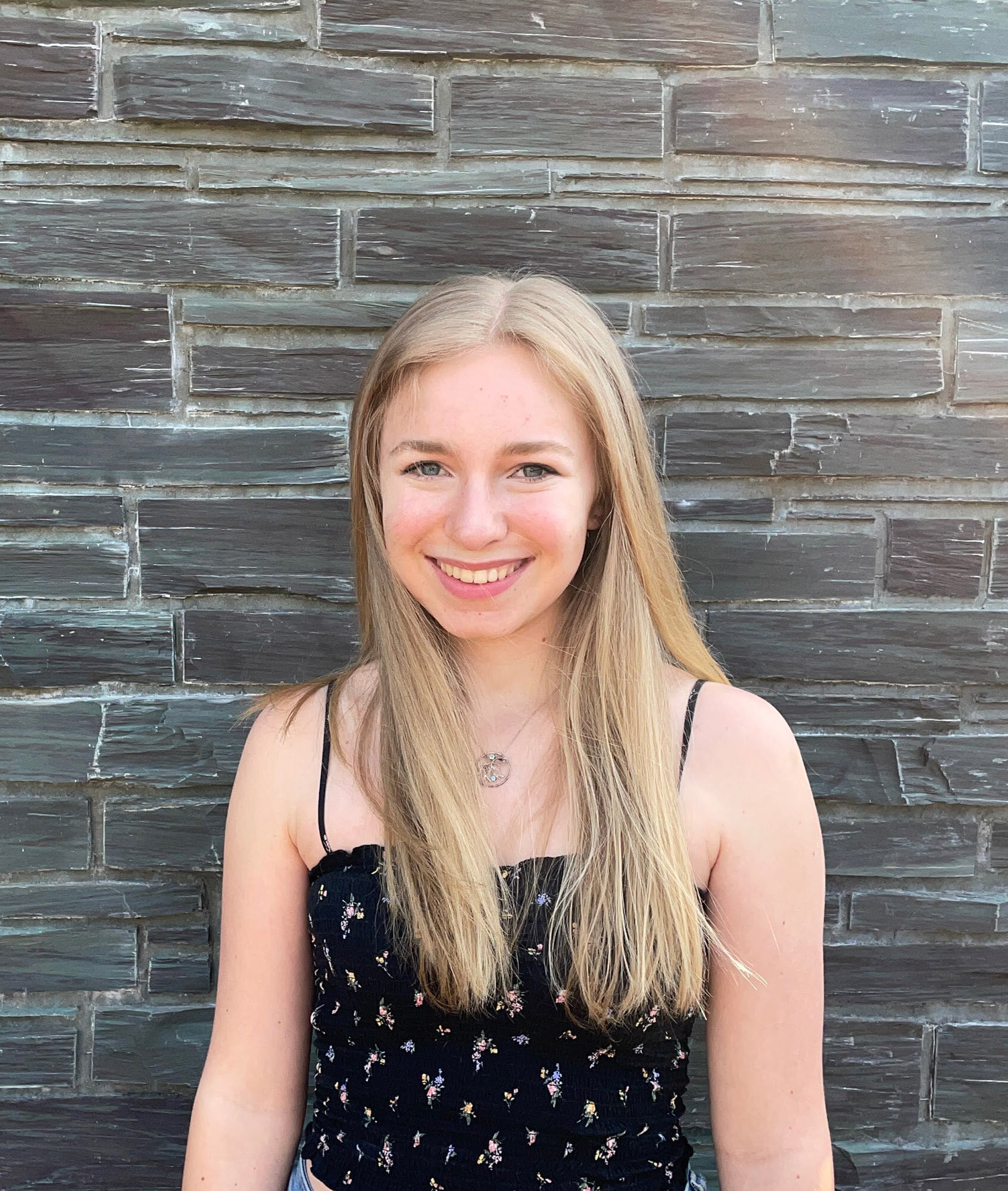Edmund Jones Scholarship Essay
The Swarthmore Centennial Foundation awards the $6,000 Edmund Jones Scholarship to an outstanding high school senior who resides in Swarthmore. Mr. Jones, former Mayor of Swarthmore, was a founding member of the Centennial Foundation and was the creator of this scholarship that has been awarded to a high school senior every year since 1993. The scholarship winner is selected based on the student’s citizenship, community service, and academic achievement. This year’s winner is Marie Lowry, and this is her essay.
Marie Lowry
Before the pandemic, if anyone had asked me what the most important communities were in my life, it would have been a list of school connections: sports teams, clubs, and friends. On March 13th of last year, I lost this community. Sports and club meetings were cancelled, and my classes became fully asynchronous. Like most people, I felt isolated, as my connection to the world was severed.
Stuck at home, I expected to feel suffocated in Swarthmore, considering how small it is. I had been desperate to escape for all of high school, wanting to live somewhere more exciting. Just a year before I was supposed to leave, the world turned upside down, and I learned all of the ways that Swarthmore created a home for me even when I did not seek it out. Despite losing my community at school, the town, composed of the people, places, and organizations within it, supported me. Swarthmore filled the void that the pandemic created for me: while I no longer saw my classmates, my town took the place of my school, and I still felt like I had a home.
…
For me, the pandemic has been characterized by long walks around Swarthmore, always accompanied by my dog Hugo, and sometimes by family or friends. These hours have helped me to realize how I came to call this quaint little town my home.
As I journey through the shaded streets, I pass the house on Rutgers Avenue where I lived during my first year in Swarthmore. Memories of my first visit into town in fifth grade come flooding back: I found it dark and eerie, with the oak-sided houses and towering trees feeling foreboding and unwelcoming. But my mindset towards Swarthmore quickly changed.
I walk through the tunnel at Swarthmore-Rutledge School (SRS), which I had walked through to school every day for a year (except when it was flooded, of course). Taking this route had helped Swarthmore feel welcoming and safe rather than dark and confusing. Next, I walk past SRS, where I made my first friends in a new town. While the tennis courts by the playground have been remodeled, the location still holds memories of my first day at a new school. I felt scared and alone as I first approached my classmates lined up on the painted numbers. Just a few introductions later, I had found my new home. At night when I walk past the front of the building, my fifth-grade project is still lit up in the entryway: molds of red, green, and blue hands are arranged in a circular pattern. Back then, I thought that it was the biggest piece of art possible. Looking at it now, I can’t help but be amazed at how small the hands are. I only spent a year at SRS, but it feels much longer because of the sense of community I developed so quickly.
Next, I walk through the Ville, where I am reminded of places that pushed me out of my comfort zone and helped me grow up. The library is one of the first places I ventured to alone, where I lost myself in the smell of paper, peering through stacks of books. The Co-op is where I felt like a “real” adult for the first time, taking a trip to the grocery store without my parents. My first job was selling fruit and vegetables for Beechwood Orchards at the Farmers Market, just outside of the library.
As I walk back home past my church, Swarthmore Presbyterian, my church, I can’t help but remember early Sunday mornings, and Sunday afternoons at middle school youth group, and mission trips travelling away from home for the first time. Here, I gained my independence and confidence, along with close friends.
While these landmarks represent many “firsts” in my life, the community I found in quarantine goes beyond memories. “Soirees” organized and attended by people on my block attempted to fill the void quarantine had created in our social lives. Though it sounds quite fancy, it simply involved each family sitting in the front of their house on lawn chairs, sharing (yelling to be heard) anything from odd talents to memories to stories of the people living on the block. Many of my neighbors shared their exciting life experiences. I would have never guessed that, on our little street, we had a high school wrestling champion, a pro hiker who made it all the way up Mount Marcy, and someone else who spent the night in a Japanese post office because they couldn’t find a hotel!
Beyond my personal experiences with people and places in Swarthmore, even the unfamiliar makes me feel safe. I imagine that there are few other places in the world where strangers greet you like an old friend. Perhaps this is because no one is really a stranger in Swarthmore: they are always a friend of a friend, or perhaps know a family member. Classmates that I have not spoken with since my days at SRS stop to talk as if time hadn’t passed at all.
Even though I had ignored the community that Swarthmore provides during most of my time in high school, it still embraces me, making me know that I always have a home. It only took a pandemic for me to realize its importance.
Marie will be attending Duke University in the fall.





